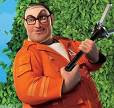Sunday, February 21, 2010
classmates blogs
period 3 station 3
period 3 station 4
period 3 station 5
period 3 station 7
period 3 station 6
period 3 station 8
period 3 station 11
period 4 station 9
period 4 station 7
period 4 station 3
period 4 station 11
period 4 station 10
period 4 station 6
period 4 station 4
period 4 station 4 number 2
period 5 station 4
period 5 station 5
period 5 station 10
period 5 station 10 again
period 5 station 6
period 5 station 9
period 5 station 11
period 6 station 4
period 6 station 5
period 6 station 6
period 6 station 10
period 6 station 7
period 6 station zero
period 6 station 13
period 6 station 9
My focus from the beginning of my journey through the MSSE program has been to improve the whole process of laboratory investigations. I have made great strides just as a natural result of the readings, assignments, content, and discussions in the various classes I have taken through the program. As I began to narrow my focus as a result of these rich, varied experiences, I have a green laser dot focus on what I plan to do for my action research project. Instead of the classic lab write up, which is just hand written or typed on a word processing program on the computer, printed and handed in, I am having my students create a blog of their lab reports. A blog is basically a web page of a document, which can be seen by anyone and be commented on. Then I put together a blog myself where there is a page with links to every student's blog in my four chemistry sections. This allows students to go to each others blogs. The students need to then go to a minimum of six of their classmates blogs from any of the four sections. They are supposed to analyze their classmates blogs and make comments on them.
In the blog, which is basically a free web page, I have the students do a traditional lab write up and they are required to use photos of the lab set-up, results, or helpful images they found in their research. My idea was that if I had them do the lab reports in a visible way on the World Wide Web, perhaps they would look a bit deeper at the experiment to put out a better product. Also, as they look at other students labs they analyze what they did, forcing the students to look at the lab experience more critically as they look at their own and others' work in the experiment. My main goals of this modification are for students to more deeply analyze results and develop better conclusions with some collaboration with their peers. I wanted my students to do a better job of reflecting on the lab process and hopefully begin to acquire a better understanding of the concepts that the investigation is attempting to uncover. I also want to see more collaboration during the reflection on investigations similar to the actual lab experience where students are counting on one another. I also wanted to know if the students felt good about the experience of blogging the lab reports, making comments on other lab reports, and what they got out of the comments that were left for them, similar to the peer review process. I was also hoping that he students saw the necessity of publishing results in science and how that becomes part of the scientific process as a great by-product to steal a term from chemistry.
How will I know if I have accomplished these goals? I hope to run three trials of this treatment for study purposes, with three trials of the control, which would be standard lab reporting. I plan to use student interviews and surveys as data sources. I also plan to keep a journal during the process and have my students maintain a science journal which I will be able to glean for data. I might use scores on the blogs compared with scores on classic lab reports as data as well as scores on summative assessments. I am also looking at the possibility of using some of the classroom assessment techniques that we looked at in 504, such as the defining features matrix, and minute papers. I like the idea that it will be easy to assess students attitudes towards this approach as most have done very little of this in the classroom but nearly all have done something like this in their leisure time.
Wednesday, February 3, 2010
Chromatography Lab
Title:
* a brief, concise, yet descriptive title
Statement of the Problem:
* What question(s) are you trying to answer?
* Include any preliminary observations or background information about the subject
Hypothesis:
* Write a possible solution for the problem.
* Make sure this possible solution is a complete sentence.
* Make sure the statement is testable.
Materials:
* Make a list of ALL items used in the lab.
* Safety concerns should be laid out here
Procedure:
* Write a paragraph (complete sentences) which explains what you did in the lab.
* Your procedure should be written so that anyone else could repeat the experiment.
Results (Data):
* This section should include any data tables, observations, or additional notes you make during the lab.
* You may scan a separate sheet(s) if necessary.
* All tables, graphs and charts should be labeled appropriately*digital photography and scanned images of notebooks with explanations
Conclusions:
* Accept or reject your hypothesis.
* EXPLAIN why you accepted or rejected your hypothesis using data from the lab.
* Include a summary of the data - averages, highest, lowest..etc to help the reader understand your results
* List one thing you learned and describe how it applies to a real-life situation.
*Discuss possible errors that could have occurred in the collection of the data
*answer discussion questions

